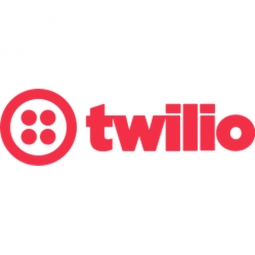Technology Category
- Networks & Connectivity - Cellular
- Platform as a Service (PaaS) - Application Development Platforms
Applicable Industries
- Buildings
- National Security & Defense
Applicable Functions
- Facility Management
Use Cases
- Occupancy Monitoring
- Tamper Detection
Services
- Cloud Planning, Design & Implementation Services
- System Integration
About The Customer
Freespace, by Workplace Fabric, is a company that specializes in making workspaces intelligent. They have been helping businesses optimize office occupancy and reduce operating costs for years. Their solution works by using sensors installed on desks and in meeting rooms to collect occupancy data. This data is then analyzed in real-time to provide facility managers with the information they need to ensure social distancing, occupancy-based cleaning, COVID-19 guidance compliance, and employee reassurance. During the COVID-19 pandemic, Freespace pivoted its services to help businesses keep their employees safe by making occupancy data available to everyone in the building.
The Challenge
The COVID-19 pandemic has forced businesses to rethink their operations, particularly the return of employees to the office while adhering to government-issued safety requirements. In countries where the virus is still uncontrolled, only 10 to 15 percent of employees are working on-site. The challenge lies in creating a safe environment for employees to return to work. Freespace, a company that specializes in making workspaces intelligent, had been helping businesses optimize office occupancy and reduce operating costs before the pandemic. However, the onset of COVID-19 meant that Freespace had to pivot its services to help businesses keep their employees safe. The company needed to make occupancy data available to everyone in the building, which required the installation of sensors on desks and in meeting rooms to collect occupancy data. However, this solution presented technical challenges, including the need for security, reliability, and scalability.
The Solution
Freespace partnered with KORE, a provider of scalable IoT connectivity platforms, to address their technical challenges. KORE's platform allowed Freespace to handle all critical IoT connectivity functions, freeing up engineers to focus on core product features. It also provided robust security features to meet the requirements of enterprise customers' IT departments. The platform enabled Freespace to reliably send sensor data over Wi-Fi or cellular to the cloud for analysis. This solution allowed Freespace to avoid building the required infrastructure themselves, which would have slowed them down and not differentiated them in their market. With KORE's platform, Freespace was able to quickly roll out its solution in 72 cities worldwide. The platform's embedded operating system on Freespace sensor devices provided secure Wi-Fi or cellular connectivity, allowing Freespace to deploy 30,000 sensors within 12 months, even during the pandemic.
Operational Impact
Quantitative Benefit

Case Study missing?
Start adding your own!
Register with your work email and create a new case study profile for your business.
Related Case Studies.

Case Study
Energy Saving & Power Monitoring System
Recently a university in Taiwan was experiencing dramatic power usage increases due to its growing number of campus buildings and students. Aiming to analyze their power consumption and increase their power efficiency across 52 buildings, the university wanted to build a power management system utilizing web-based hardware and software. With these goals in mind, they contacted Advantech to help them develop their system and provide them with the means to save energy in the years to come.

Case Study
Intelligent Building Automation System and Energy Saving Solution
One of the most difficult problems facing the world is conserving energy in buildings. However, it is not easy to have a cost-effective solution to reduce energy usage in a building. One solution for saving energy is to implement an intelligent building automation system (BAS) which can be controlled according to its schedule. In Indonesia a large university with a five floor building and 22 classrooms wanted to save the amount of energy being used.

Case Study
Powering Smart Home Automation solutions with IoT for Energy conservation
Many industry leaders that offer Smart Energy Management products & solutions face challenges including:How to build a scalable platform that can automatically scale-up to on-board ‘n’ number of Smart home devicesData security, solution availability, and reliability are the other critical factors to deal withHow to create a robust common IoT platform that handles any kind of smart devicesHow to enable data management capabilities that would help in intelligent decision-making

Case Study
Commercial Building Automation Boosts Energy Efficiency
One of the challenges to building automation is the multitude of non-interoperable communications protocols that have evolved over the years. Buildings have several islands of automation. Bridging the islands of different automation without losing the considerable investment in each specialized control network is the main focus in this solution.

Case Study
Protecting a Stadium from Hazardous Materials Using IoT2cell's Mobility Platform
There was a need for higher security at the AT&T Stadium during the NFL draft. There was a need to ensure that nuclear radiation material was not smuggled inside the stadium. Hazmat materials could often be missed in a standard checkpoint when gaining entry into a stadium.




